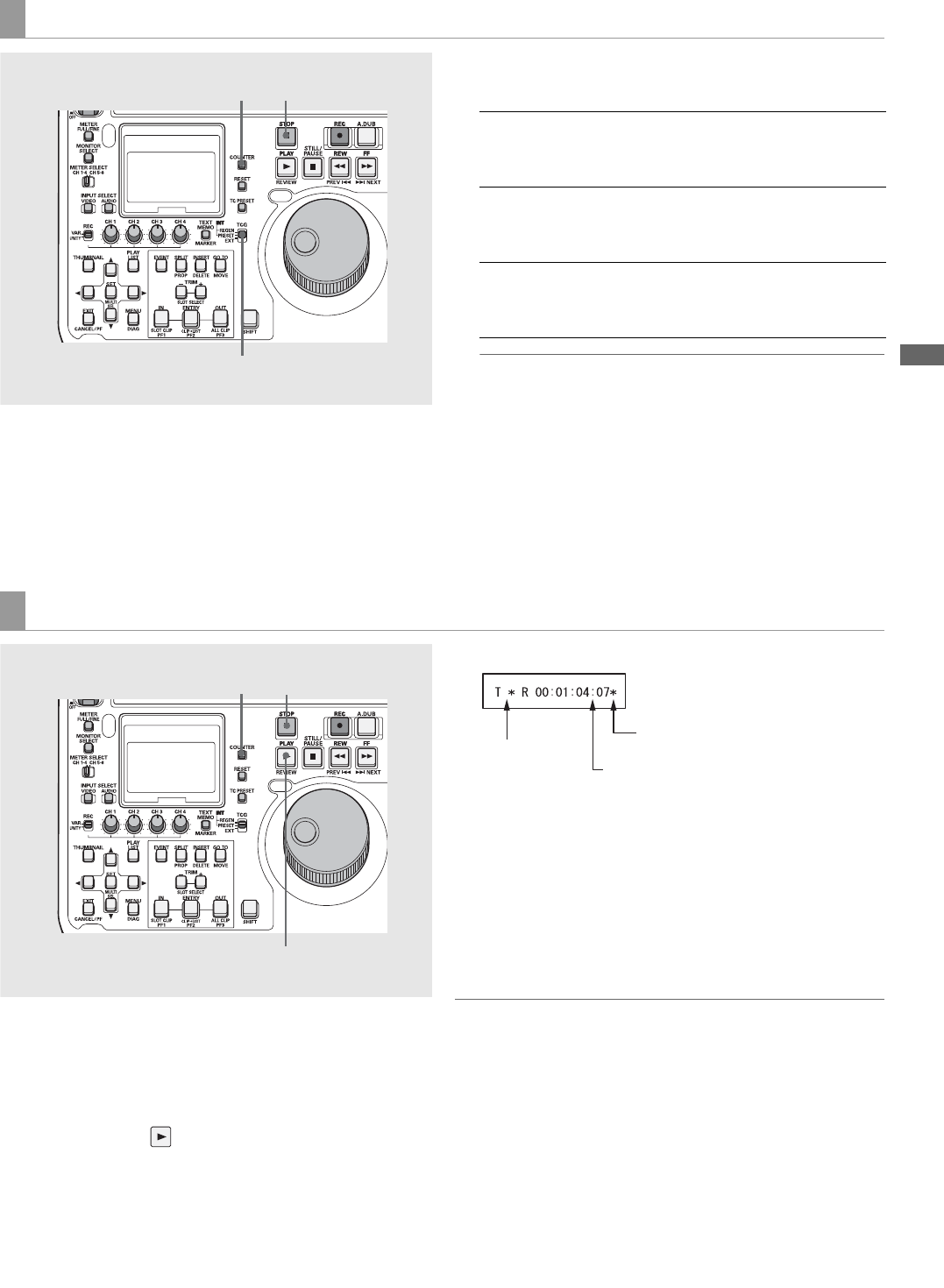
Setup: Time Code, User Bit and CTL
143
Setup
1 Engage the stop mode.
2 Use the COUNTER button to select [TC].
3 Set the TCG switch to [EXT].
(External time code selection)
4 Make the following settings in setup menu No. 507
(EXT TC SEL).
◆ NOTE:
•When SLTC and SVITC is set and an analog composite or SD
SDI input signal is selected, the VITC on the input video signal
is recorded. When 1394 is selected as the input signal, the IEEE
1394 digital input signal time code is recorded.
•Setup menu No. 507 EXT TC SEL does not appear in modes
other than 59.94 Hz and 50 Hz. Locked in SLTC in this mode.
•When setup menu No. 040 VFR REC is set to ON, REC RUN is
selected regardless of the TCG switch setting.
1 Engage the stop mode.
2 Use the COUNTER button to select [TC] or [UB].
3 Press the PLAY button.
Playback starts and the time code appears on the display.
When the SUPER switch is set to [ON], the time code is
superimposed on the monitor.
■ Time code when no power is supplied
Also when no power is supplied, the backup function works
enabling the time code generator to provide long-term (about
one year) operation. Accuracy when no power is supplied is
about ±30 s per month.
◆ NOTE:
•Under the conditions listed below when the time code generator
advances regardless of operation mode, the backup function is
enabled
- When the TCG switch on the front panel is set to “PRESET” and
setup menu No. 504 RUN MODE is set to “FREE.”
- When the TCG switch on the front panel is set to “EXT” and the
external time code set in setup menu No. 507 EXT TC SEL is
disconnected from connector on the rear panel.
•When settings in setup menu No. 25 SYSTEM FREQ are revised,
advance data is cleared.
Setting the external time code
12
3
EXT_L: The LTC signal input to the TIME CODE IN
connector (BNC) on the rear panel is
recorded as TC.
SVITC: The VITC signal attached to the serial signal
input to the SDI IN (HD) connector is
recorded as a time code.
SLTC: The LTC signal attached to the serial signal
input to the SDI IN (HD) connector is
recorded as a time code.
Reproducing the time code and user bit
3
12
When the time code
signal cannot be
read, an asterisk (*)
is displayed.
The colon between the seconds and the frames
changes to a period (.) in drop frame mode.
“ ” : Field 1, field 3
“*” : Field 2, field 4


















